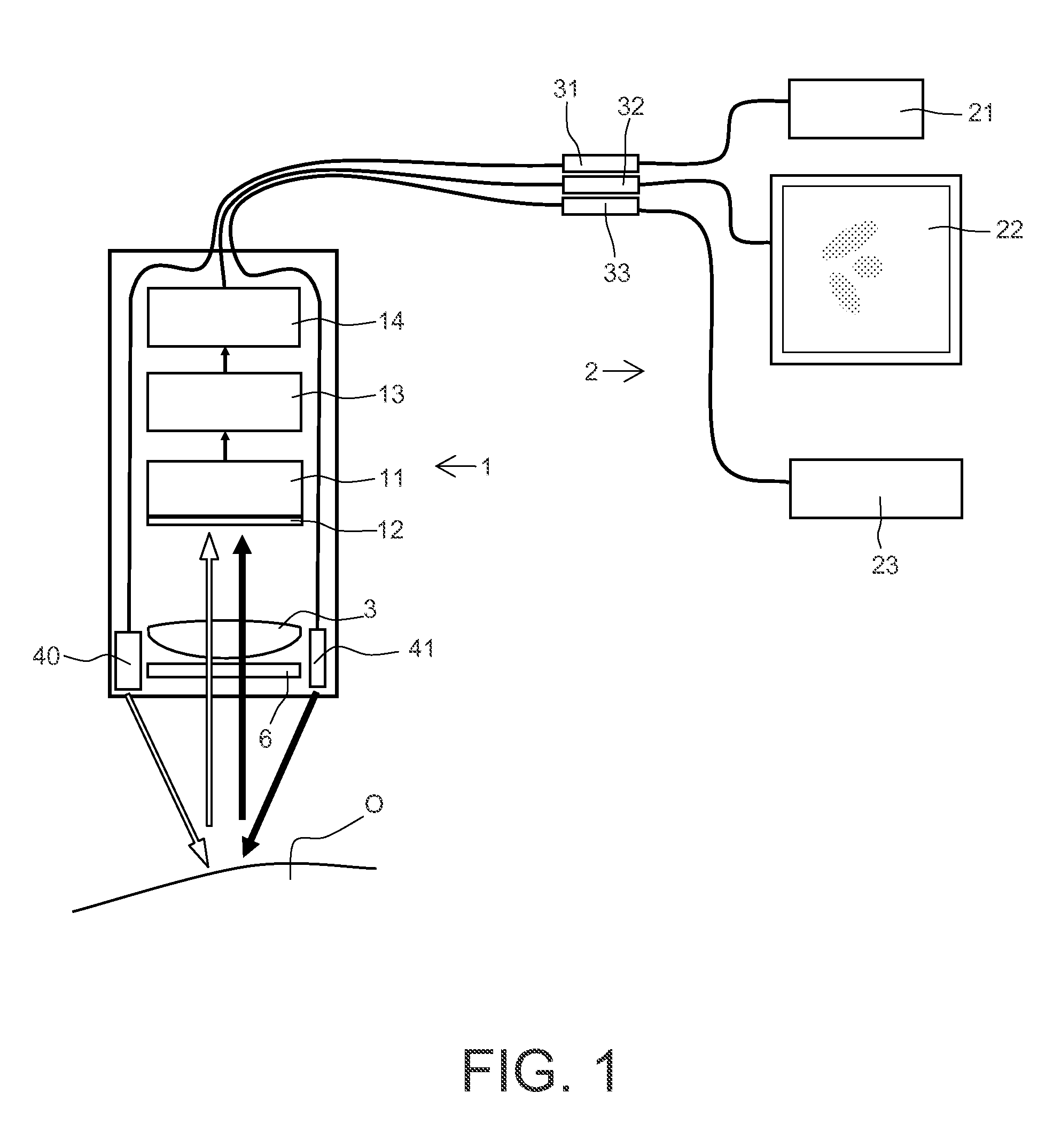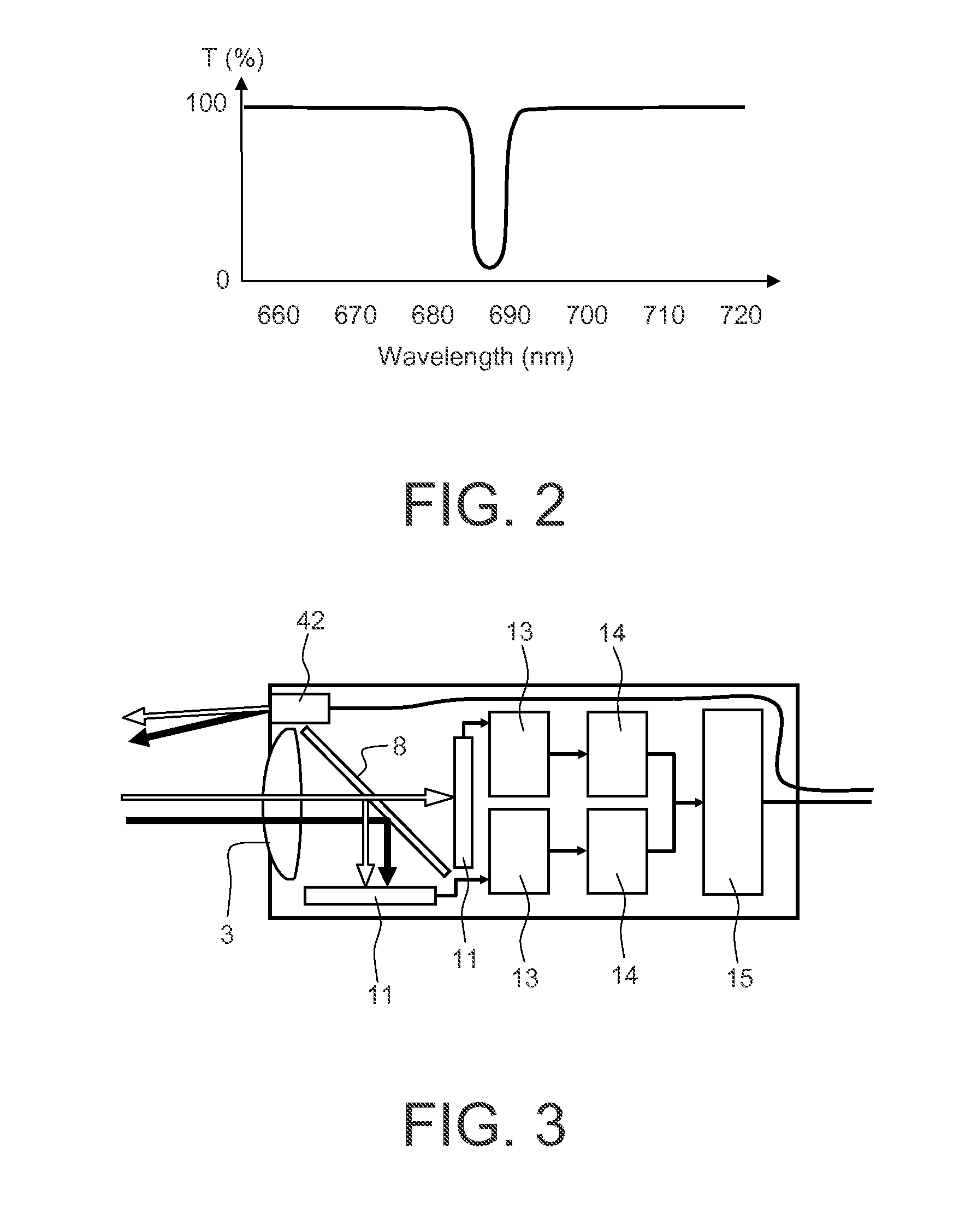Single-Use Bispectral Optical Head for Videoendoscope and Associated Videoendoscope
a videoendoscope and optical head technology, applied in the field of endoscopy, can solve the problems of affecting the quality of endoscopy, so as to avoid any sterilization problem and inexpensive optical head cost
- Summary
- Abstract
- Description
- Claims
- Application Information
AI Technical Summary
Benefits of technology
Problems solved by technology
Method used
Image
Examples
first embodiment
[0030]As as a first nonlimiting example, FIG. 1 represents a general view of a videoendoscope according to the invention. It essentially comprises an optical head 1 and an assembly 2 for providing the power supply and analysing the images obtained from the optical head 1.
[0031]The optical head 1 comprises a microcamera composed of the photosensitive sensor 11 and the lens 3. The microcamera forms an image of the object O on the sensor 11. One of the important requirements of the optical head, given its possible use in a medical environment, is that it should have the smallest possible diameter. The photosensitive sensor is therefore preferably a sensor of “CMOS” type in the 1 / 10″ format comprising around a million pixels. The dimensions of the sensor do not exceed a few millimetres, the image field is a square with 2 millimetre sides and the size of the individual pixels does not exceed 2 microns. The lens is a microoptic with a focal length of 2 millimetres. If this lens has an enl...
second embodiment
[0040]FIG. 3 shows the optical head 1 based on the use of two matrix image sensors 11. The two photosensitive sensors are positioned orthogonally to one another and symmetrically on either side of a dichroic filter 8.
[0041]One of the two photosensitive sensors 11 operates in monochrome mode, also called “black and white”. It allows for the acquisition of the fluorescence image. The second photosensitive sensor is a colour sensor. These photosensitive sensors are linked to image forming means, for example amplifiers 13 and analogue-digital converters 14, these assemblies forming either a black and white camera or a colour camera. Such photosensitive sensors may be sensors produced in CCD or CMOS technology. The black and white camera and the colour camera can be linked to a multiplexer 15, for the transmission of the digital signal to the image reception unit remote from the endoscope.
[0042]According to a first variant, the device has two distinct operating modes, which can be execut...
PUM
 Login to View More
Login to View More Abstract
Description
Claims
Application Information
 Login to View More
Login to View More - R&D
- Intellectual Property
- Life Sciences
- Materials
- Tech Scout
- Unparalleled Data Quality
- Higher Quality Content
- 60% Fewer Hallucinations
Browse by: Latest US Patents, China's latest patents, Technical Efficacy Thesaurus, Application Domain, Technology Topic, Popular Technical Reports.
© 2025 PatSnap. All rights reserved.Legal|Privacy policy|Modern Slavery Act Transparency Statement|Sitemap|About US| Contact US: help@patsnap.com



